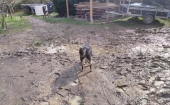





S Bengi wrote:
Nitrogen fixer = legumes/peas/beans family (plus adler and goumi)
Predator/Good Insect attractors = strong smelling herbs esp ones that you can cook with
Soil Pest controllers = they help control nematodes, its kind of a short list Garlic family, Oyster Mushroom
Mineral Miners/Traders = Mushroom/Fungi Family, weeds with long/deep roots like dandelions
Smaller Fruit = Because I am in the city my main plants are only 10ft and so my smaller fruit is usually only 3ft or less. I do have a 2nd site in Florida where my plants will mature to 25ft, so my smaller fruit tree can be alot bigger. Some folks might even have 50ft walnut trees.

Anne Miller wrote:The list of plants that S Bengi lists and his explanations are good.
A food forest would include many perennial plants.
A food forest would mimic how Mother Nature would plant her plants.
For making a food forest, folks usually include layers.
There are 7 layers, including:
Tall Tree or Canopy Layer. This layer would consist of the tallest trees, most likely fruit and nut trees.
Sub-Canopy or Large Shrub Layer.
Shrub Layer
Herbaceous Layer.
Ground Cover Layer.
Underground Layer.
Climber, Vine or Vertical Layer.
For an added bonus these might be added, a Mycelial or Fungal Layer
Since the tree is so young I am having problems suggesting plants to add layers.
So I would suggest something like strawberries for the ground cover and a small berry bush to get your layers started.
Here are some threads to help explain layers:
https://permies.com/t/160695/Start-Food-Forest-Step-step
https://permies.com/t/61177/Planning-Layers-Food-Forest


Abe Coley wrote:Rather than buying plants, learning how to propagate plants has been the way to go. Depending on the species, it is at least 100x to 1000x cheaper on a per plant basis. When I got good at propagation it enabled me to have a near endless supply of plants, which changed my perspective on both the individual plants and the mass plantings within the food forest. Previously, when a tree died I experienced grief and loss, but now it's like no big deal and I just replant something different that might be able to better handle whatever killed the previous plant. Doing mass plantings of 100 or 1000 of a batch of seedlings is akin to sample size in a study, and the successes and failures gives me greater insight about the individual plants, the species as a whole, the site, my methods, etc.
As far as propagation goes, it seems like air pruner beds are better than in-ground beds, and both are better than pots. And fall plantings survive better than spring plantings.
To not get discouraged when I kill baby trees, I think about something I recall hearing Akiva Silver say, something like "Baby trees are super pathetic weaklings and they need a lot of help to survive in the early years. Some trees make millions of seeds per year and they live for hundreds of years, and only 1 or 2 of those seeds need to survive over the lifetime of the parent tree for the population to maintain replacement rate. If that's the measure of success, then it really gives you perspective on how much trees pretty much suck at life."

S Bengi wrote:dutch clover for nitrogen fixation,
chives/garlic-chives, I like how they are green in the winter, and they are just the right height
winter savory, I love this plant because it is halfway between mint and thyme.
oyster mushroom, it would be super cool to also get a mushroom harvest too.
